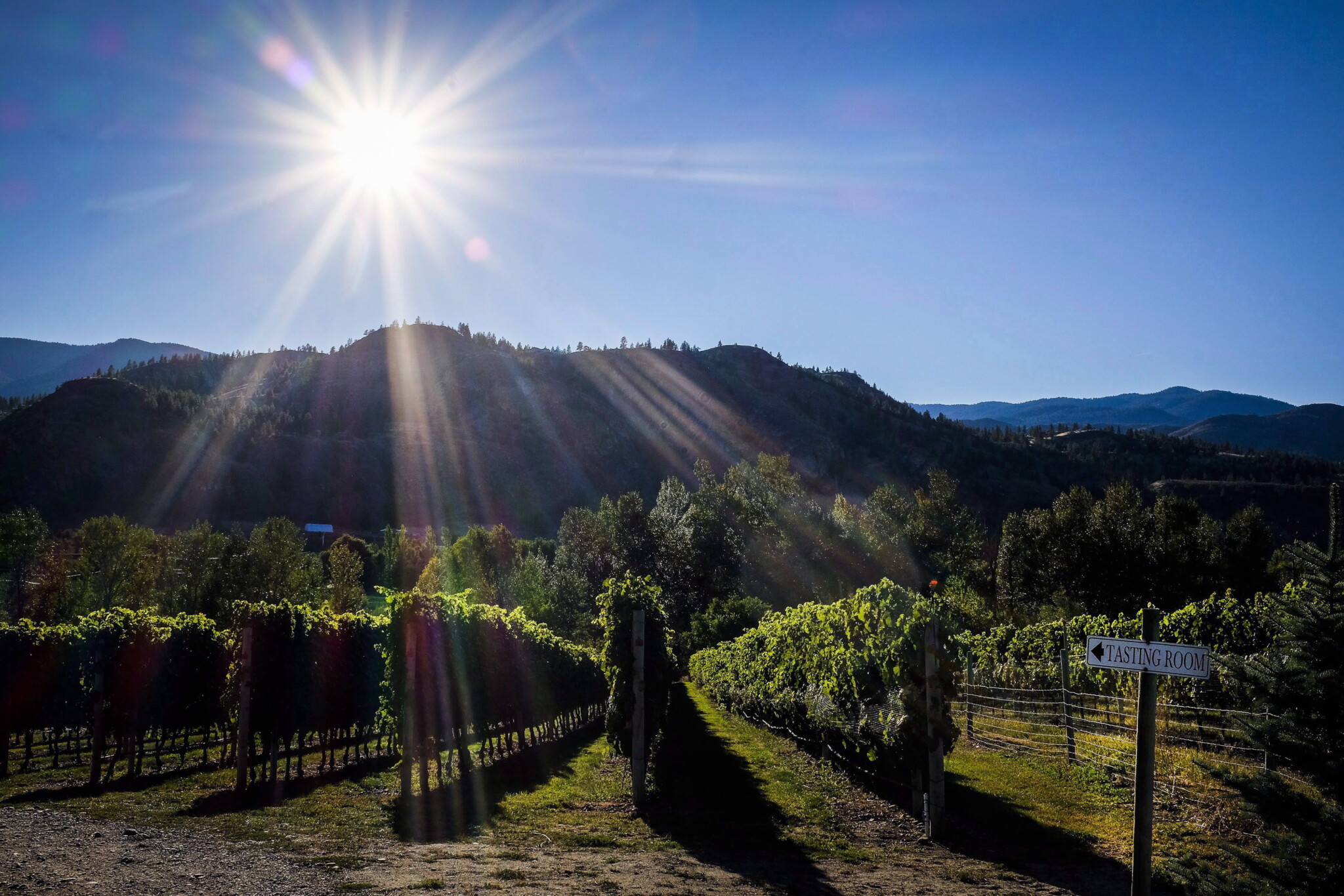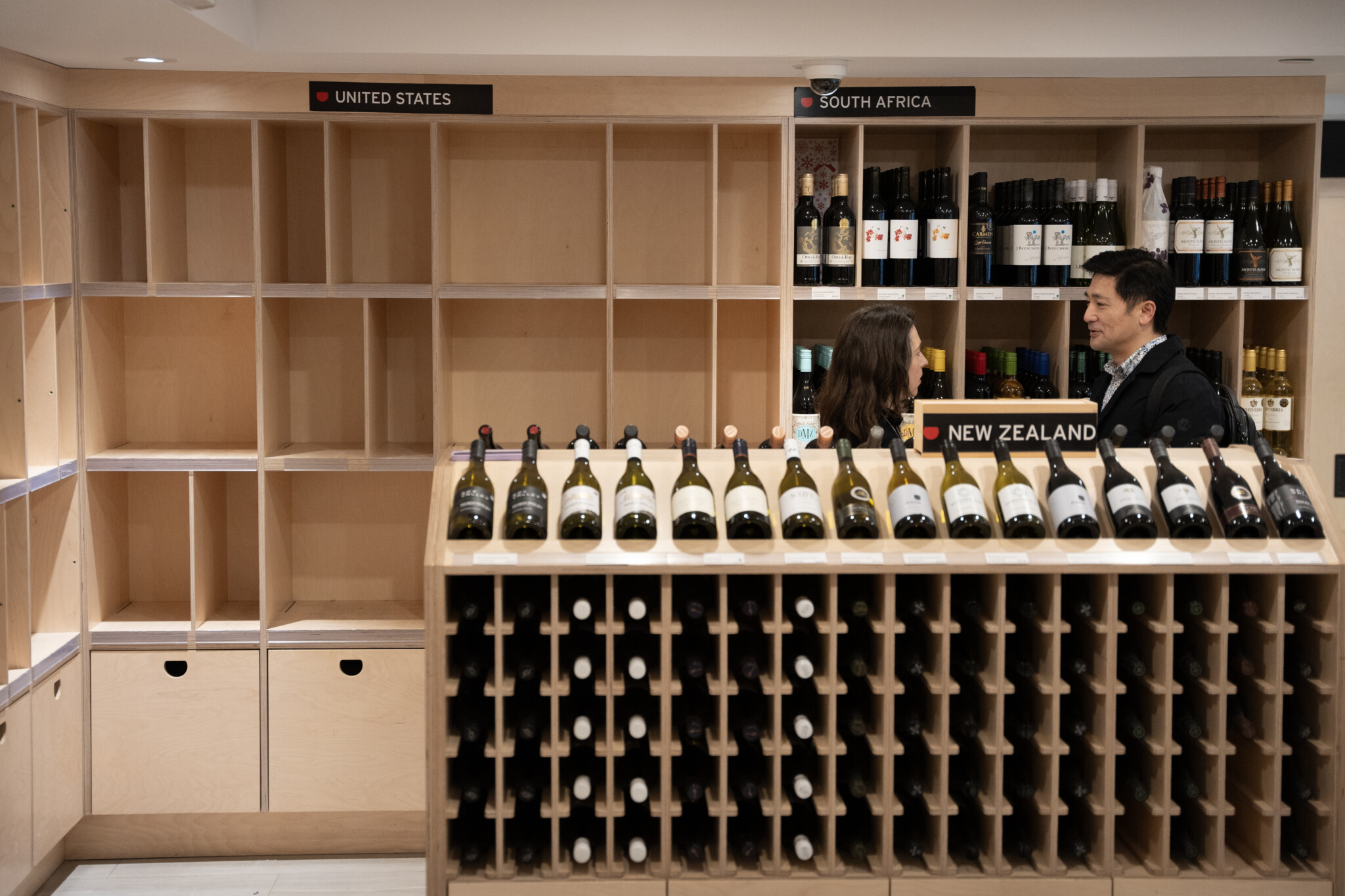This post was filed behind enemy lines. It was written in Southern California, where, in the company of my wife and youngest son, I spent the latter’s school break staying with his Godfather, and our close friend, in Los Angeles. I have been visiting our friends in L.A. for over 25 years and this trip was the first time I saw it rain…for four out of six days.
There’s a metaphor in this trip somewhere: sunny relations between Canada and the U.S. turning to rainy days. Or something like that. We had fun anyway, especially around the dinner table. There, we did something we won’t do here until the Great Trade War is over: ate fresh California produce, like slender baby asparagus from the Hollywood farmers market, and drank California wine.
Until the Great Trade War, California wine was popular in Canada. We have been the American wine industry’s top export market for obvious geographic reasons. In my home province, four of the five best-selling wine brands at the Liquor Control Board of Ontario were from California, until they were pulled from the shelves.
Anecdotally, I understand that California Cabernet Sauvignon was the go-to luxury wine among the business elite. At the steak houses of Calgary or Toronto, when the finance bros and sisses toasted a big deal, the likelihood that the bottle bore the words Napa or Sonoma Valley was high.
The California wine show, that rolled through big Canadian cities every spring was a big deal. The wine trade would show up with $100 bottles, and the hospitality trade would taste as many as they could, and get their orders in. The mood was more like a party than a trade show.
For now, the party is over and I am increasingly being asked what to recommend to those whose California Cabernet, Oregon Pinot Noir, or Washington State Syrah habit has been curtailed.
The patriotic choice for U.S. wine alternatives is B.C. And it’s a good choice, stylistically. Despite the Okanagan Valley’s latitude, the southern part is technically a desert. In the summer, hot dry days are followed by cool nights; the contrast is what wine people call a diurnal shift and it’s also a marked characteristic of California’s wine-growing regions.
British Columbia’s latitude helps its wine growing in another way. While the growing season at the 49th Parallel is shorter than the middle of California, long summer days in the north mean the total hours in which grape vines are exposed to sunlight is comparable. Between diurnal shifts and sunlight hours, B.C. vines produce ripe fruit that can make wine stylistically similar to popular U.S. brands.
The only trouble with B.C. wines is supply. Even outside of the tragic and devastating deep freeze of 2024, there’s just not enough of it to replace sales of U.S. wine in Canada. For that, we’ll have to look to the Southern Hemisphere and the four big exporters of wine on the other side of the equator: Argentina, Australia, Chile, and South Africa. Here’s a rough guide on what wine drinkers used to California red wines might look for from each country.

Rows of grape vines at the Okanagan Valley’s River Stone Estate Winery in Oliver, B.C., Sept. 12, 2016. Jeff McIntosh/The Canadian Press.
Because the top-selling U.S. wines in Canada are Cabernet Sauvignons, which cost around $20 a bottle, that’s my point of reference. Because the wine-growing areas of all four antipodean countries are roughly similar to California’s, this information could be roughly applied to other grape varieties. So, a fan of California Chardonnay might just as well enjoy an Australian one, and so on.
Argentina grows and makes wine from grapes other than Malbec, but this old Bordeaux red variety is what dominates the country’s exports. A week in Buenos Aires last year showed me that Malbec can be made in all kinds of interesting ways, including wines delicate enough to pair with fish.
Malbec can also be made to emphasize the black current, or cassis, flavour note that distinguishes many Californian Cabernet Sauvignons. When I was in Argentina, I wasn’t always sure if I was tasting Malbec or Cabernet. The Argentines also make a fair amount of Cabernet Sauvignon, but will often be just as suitable an alternative
Australia is best known for Shiraz (a.k.a. Syrah), but like all the producing areas keyed into exports, they make fine Cabernet Sauvignon. Look for Cabs from the McLaren Vale south of Adelaide, which is known for growing the grape. Don’t be surprised to find a herbal note in with the black fruit; Aussies swear it’s the effect of eucalyptus trees around the vineyards.
Chile also has a lot of eucalyptus trees. They were imported from Australia for the forestry industry. Most of the big, famous Chilean wine houses were begun by planting Cabernet Sauvignon. At least three were begun in the mid-nineteenth century by resource barons who imagined their haciendas as Bordeaux estates and brought plantings back from their grand tours of France. This is to say, they have been at it for long enough to know what they’re doing.
Chile’s particular red wine grape is Carmenère, another Bordeaux variety, but one that fell out of favour in the Old World. Until DNA testing settled the matter, much Carmenère was mistaken for Merlot, and it shares a red fruit character with that better-known grape. Chilean Carmenère often also shows a chocolate or cocoa note.
South Africa also makes Cabernet Sauvignon and the Cabs from the Cape can offer some of the best value on store shelves. The country’s persistent economic woes have kept the rand low, so even Canadian dollars can go further on South African wines.
The South African red wines that do command higher prices these days seem to be either Rhône blends from warm regions north of Cape Town or Pinot Noir from cooler sites near the South Atlantic Ocean. Cape Cabernet Sauvignon quietly persists; those who know, know.
Of course, there is Cabernet Sauvignon being made just about anywhere that grows wine grapes. To those who can afford First Growth Bordeaux from the Left Bank or Super Tuscans from the Tyrrhenian coast, I say only, “Cheers.” There’s a big world of wine out there waiting for us.









